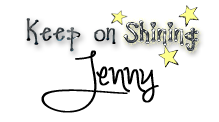Look at that cute little baby! Bet you can't guess who that is! That's right! None other than yours truly as a red-headed, spunky, determined, "strong willed" two year old! Boy oh boy there sure are some good stories about this tantrum throwing two year old! Over the past several years I have come to realize that when the world didn't go my way I was still handling it like that two year old. Here I was in my thirties throwing adult-sized tantrums. Does that sound familiar?
As I integrate the Seven Powers of Conscious Adults into my life, I am noticing that I perceive my upset differently and have new tools to help me handle it. These tools are the ones I desire to hand down to my two precious children as well as the children in my care at school. One thing that always sticks out to me in Conscious Discipline is the statement, "You can't teach something you don't posses." The skill of Composure is so essential to how we function in life. For our very young children it is the essential ingredient to self-regulation and impulse control. A good friend describes it like a "pause button". In Conscious Discipline we like to use the skills of Active Calming and Pivoting to help us create that "pause" so that we are more likely to respond to life events from the higher centers of our brains than react out of the lower centers.
One of the structures we use in Conscious Discipline is the Safe Place. The purpose of the Safe Place is to give a child (or adult) a space where they can calm down and regulate their feelings safely. This structure helps us teach children the necessary tools so that they can have the "pause" button that I'm referring to. They have the opportunity to calm down, name their feelings and then work toward a solution either on their own or with the help of an attuned adult.
Space for Calming Down
Feeling Buddies Curriculum
The Feeling Buddies Curriculum by Dr. Becky Bailey helps teach children and adults the skills necessary for self-regulation. Once you have introduced necessary skills for children to begin using the Feeling Buddies and understand the Five Steps to Self-Regulation you will really begin to see a difference in not only how the children handle their upset, but the adults as well!
Check out our Ribbon Cutting Ceremony. This little boy is one that has had quite a journey toward learning self-regulation. He was very resistant to any type of calming technique that we used with him, but with lots of patience, teamwork, and creativity, we have moved forward to a place of celebration because he now has skills he can use to help him manage his emotions. We gave him the honor of cutting the ribbon and giving the children a tour of the Safe Place not only because he has become such a pro, but also because it was a great opportunity to increase his skills. Teaching and learning go hand in hand.
Stay tuned for more details about our Safe Place like what tools we use, breathing techniques, class books, and more great video clips!











